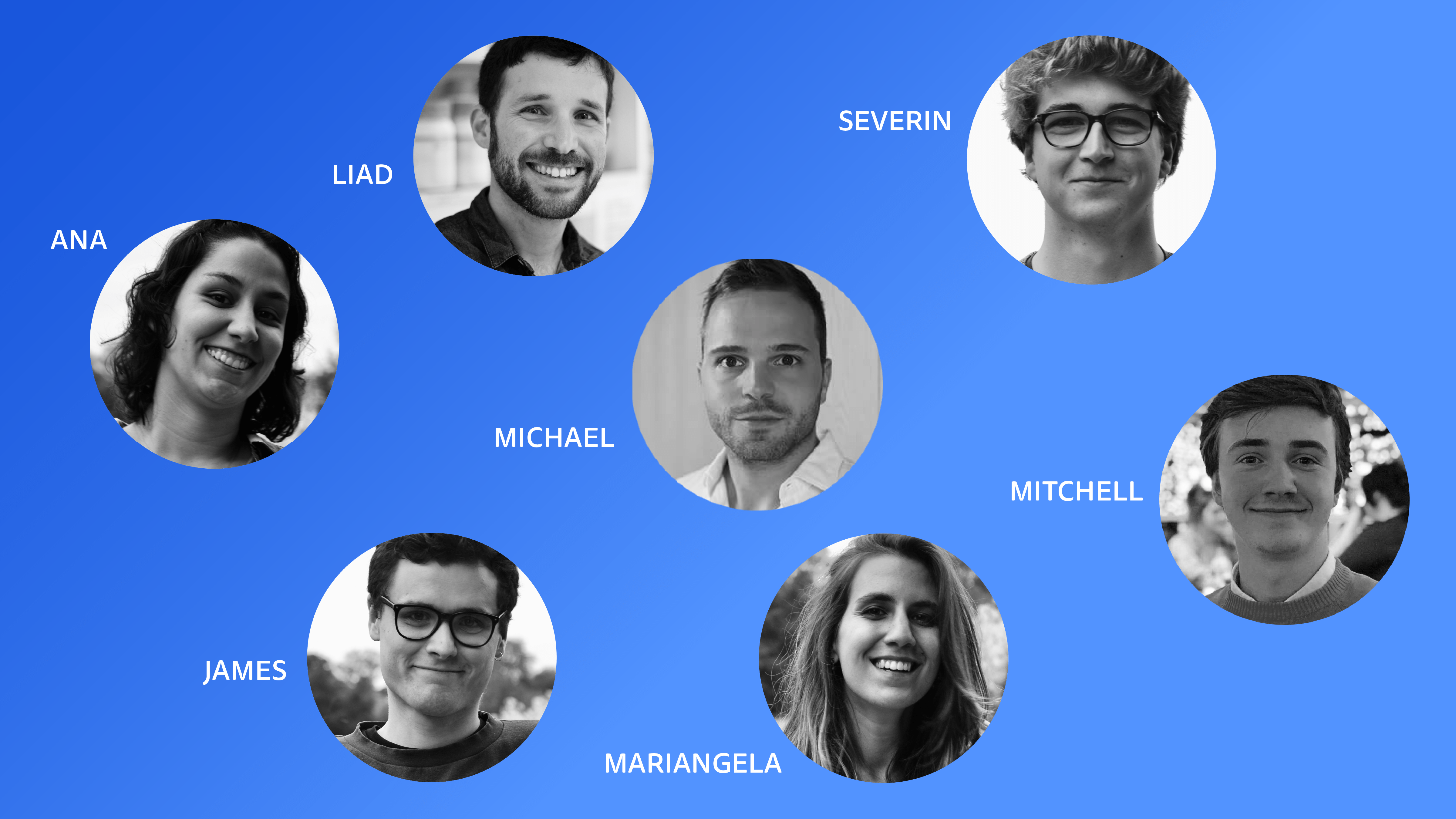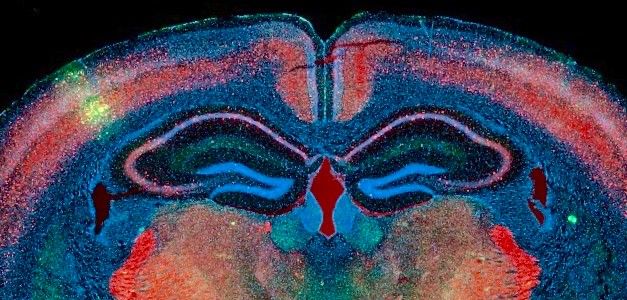Kohl Lab: Decoding How the Brain Encodes Information
Dr. Michael Kohl's Path to Neuroscience
More on Dr. Michael Kohl
Current Position
University Research Lecturer
University of Oxford
Department of Physiology, Anatomy, and Genetics
Educational History
B.S. Neuroscience, University College London
Ph.D. in Neurophysiology, University of Oxford
Postdoc, University of Cambridge and Stanford University
Postdoc, University of California, Berkeley
Recent Papers
"A home-made ammonium dichromate volcano is a strong way to inspire interest in science in 4-year olds!" This volcano—home-made by his grandfather, a chemist—eventually lead Dr. Michael Kohl to a career in science. Now, he's running a lab of over 10 scientists as a University Research Lecturer at the University of Oxford, though the Kohl Lab isn't making volcanoes, or even studying them for that matter. Rather, their research focuses on how the brain stores information.
By the time Michael had completed high school in Germany, where he grew up, he knew he wanted to study the brain. He was drawn to University College London, known for their strong neuroscience program. Michael's undergraduate experience at UCL confirmed his fascination with the brain and led him to pursue a Ph.D. in Neurophysiology. He spent his graduate years and two additional years as a postdoc working with Dr. Ole Paulsen, exploring the neural circuits that drive specific brain activities, using new optogenetic tools and developing a nifty microscope, and laying the foundation for the research on which he would base his lab.
Kohl Lab Motivations: Understanding Memory and Perception
Lab Members
Dr. Liad Baruchin, Postdoctoral Research Scientist
Dr. Mariangela Panniello, Postdoctoral Research Scientist
Ana Bottura de Barros, Postgraduate Student
Severin Limal, Postgraduate Student
Filippo Ghezzi, Graduate Student
James Rowland, Graduate Student
Afrah Shibu, Undergraduate Student
Mitchell Mealing, Undergraduate Student
Lab Group
Revealing these principles is no small task. Neuroscientists have long known that specific regions of the brain have specific functions—for example, the hippocampus is critical for memory formation, and the sensory cortices process sensory inputs. Neuroscientists also know that there are physical links between regions of the brain. But they know relatively little about the molecular mechanisms that govern how information is transmitted from one region of the brain to the other, and how information is stored or lost. "Neurons tirelessly exchange messages to highlight and remember what is crucial, as well as to forget less important pieces of information. Today, we don't know much about the language spoken by neurons, which is ultimately what determines our decisions, memories, and actions," Dr. Mariangela Panniello, a postdoc in Michael's lab, explains.
Mariangela and a graduate student, Severin Limal, both became motivated to study the brain after seeing people close to them affected by neurodegenerative diseases. As a result, Severin says he's known since his childhood that he wanted to be a neuroscientist. Mariangela, too, identified her calling early: "I found myself obsessed by this organ that is so important for us, but also so mysterious."
Other members of the lab were simply drawn to the idea of solving new scientific problems and making novel discoveries. Both Ana Carolina Bottura de Barros, a graduate student, and Dr. Liad Baruchin, a postdoc, developed an eye for experimentation early on. Ana remembers enjoying her science classes the most—whether physics, chemistry, or biology. Liad enjoyed exploring nature and even taking on his own research projects as a kid. "So it was quite a natural progression to just carry on doing that as an adult," he says.

Integrating Complex Disciplines and Data
Creative experimentation and multidisciplinary problem-solving is core to the Kohl Lab's research. Using mouse models, the lab takes an integrative approach to neuroscience, combining various research methodologies and studies on distinct regions of the brain. One area of their research focuses on the role of interneurons, the neurons that help create intricate neural circuits, in the sensory cortices. Another area of their research focuses on memory formation in the hippocampus and the nearby retrosplenial cortex, a region of the brain that has been implicated in memory processing. They're particularly interested in associative memories, or memories that tie seemingly unrelated items to one another.
Research Projects, in Their Own Words
James: I am currently recording the activity of neurons in sensory areas of the cortex and trying to replay that activity artificially in the brain using light.
Ana: We are looking into how the Retrosplenial Cortex helps in forming associative memories.
Severin: I am trying to understand how sensory areas of the brain merge senses and how that relates to our understanding of our environments.
Liad: I study early somatosensory circuits in the mammalian brain.
The techniques that the Kohl Lab uses to investigate these regions of the brain and to unravel their relationships span disciplines: cell biology, genetics, physiology, behavioral neuroscience. In particular, the lab employs cutting-edge optical tools, including optical imaging and optogenetics. These tools allow them both to elucidate the functions of neurons and to manipulate those functions. And they can study function and manipulate function simultaneously in live animals: taking optical recordings of a mouse brain while controlling a neuronal population with optogenetics. They might measure mouse behavior in response to these manipulations at the same time, too.
The interdisciplinary nature of work in the Kohl Lab is reflected in the complexity of the datasets they generate—from the hundreds of images of beautifully dyed brain sections to massive 3D imaging datasets, from data on mouse behavioral trials to records of transgenic mice themselves. It is this complexity that both pushes the frontier of their field and that initially captured the interest of lab members. An undergraduate, Afrah Shibu, notes that the lab's research perfectly matched her growing interest in systems neuroscience. Others, such as Ana and Mariangela, wanted to employ both cutting-edge imaging and physiology to investigate the brain, and they knew they'd dramatically expand their experimental skillset in the Kohl Lab. James Rowland, a graduate student, was drawn to one innovative tool in particular: "their high-tech microscope!" Sometimes, James says, doing science is like playing with toys all day (expensive toys, that is).
Benchling for Data Management and Collaboration
The Kohl Lab depends on Benchling to manage much of the complex data they generate. Everyone in the lab, from Michael to the undergraduate students, uses Benchling as a central platform for recording, referencing, and sharing their data. Michael explains, "It is our everything-in-one-place resource for planning projects, keeping protocols and an inventory, recording metadata, and linking to actual data." For Michael, this means that he has complete visibility into the data generated in the lab—both historical data and real-time data. For his postdocs and students, this means that they can more easily and quickly enter and reference data. They capture everything from ideas and general observations to detailed protocols describing their methods and materials. They also capture data about every imaging session—behavior, zoom, time, and more—and results from every experiment they run.
Why Benchling?
Michael: My favorite feature (and what sold it to me over other electronic lab books) is the super easy search and linking function using the "@".
Mariangela: Benchling is one of the most precious instruments I have for my research these days. It has helped me keep my experimental records organized and easy to access. Absolutely life—and research—saving!
Mitchell: I really enjoy how everything is available on the fly, whether it be lab protocols or data—it’s very convenient.
Severin: I particularly enjoy the cross-referencing options that allow me to keep track of my experiments across days and setups and to have a comprehensive vision of my work in progress.
Because everyone records and shares data on Benchling, the Kohl Lab can collaborate and exchange data more effectively. The Kohl Lab is a fairly new and small lab, which means that, in Severin's words, "collaboration and exchange is key!" Consistent with this, Afrah's favorite parts of Benchling are the tools that allow her to organize all components of her research, from experimental results to comments on Benchling files "in a clear, concise way that is easily accessible by the rest of the lab." This accessibility benefits the Kohl Lab's science, surfacing methods and protocols to the entire lab. It also benefits their culture. In fact, the group's friendly and collaborative nature is ultimately what compelled several lab members to join.
Looking Ahead: The Lab's Collective Mission and Individual Goals
Together, the Kohl Lab is building a body of work that will elucidate how information is coded in the brain and how this coding contributes to memory and learning. In the long term, many of the lab members hope to directly impact human health. Michael's two undergraduate students, Afrah and Mitchell Mealing, have been inspired to pursue a career in applied research or academic medicine—perhaps focusing on memory loss. Mariangela wants to apply her postdoc work to clinical research on brain pathologies. The other members of the lab are committed to staying in basic neuroscience or biomedical science, where they'd like to run a lab or continue contributing to one.

This image from the Kohl Lab shows GCaMP expression in the somatosensory cortex (green) and PV+ interneurons (red). It was first published on their group website.
"Consistently the most exciting aspect about our research is the people involved," Michael says. "Having some of the brightest and kindest people out there as students, postdocs, and collaborators is a great treat and privilege."